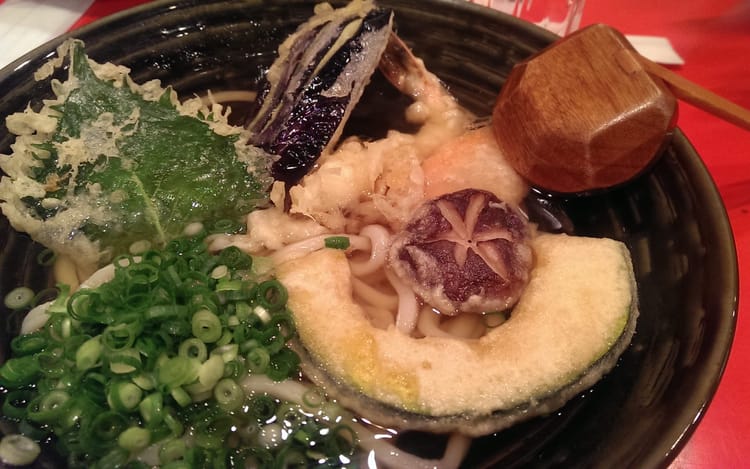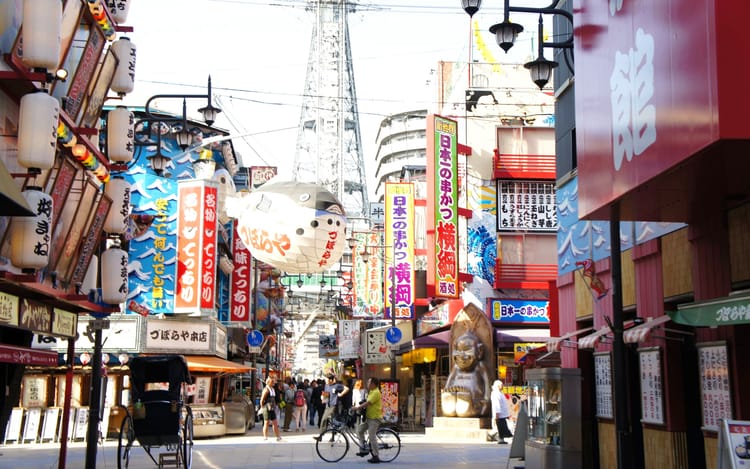Experiencing Umami and cooking on a TV show in Fukuoka

Originally posted on August 25th 2013.
Since the week in Fukuoka and the Summer Session program of 2 weeks went by so fast, actually too fast, it is a good thing that I have free time to make a review on my little adventure in Fukuoka.
The first day started with the lecture about Our food in the globalized society and food security. The presentation was held by a professor who is a food economist. His research field has aspects in the management of agricultural businesses and organizations, direct marketings of farm products such as community supported agriculture. Another interesting research field is the rural development e.g. OVOP (One Village one Product). One of the important indicator of the korean and japanese economy is the self-sufficiency ratio (SSR). Compared to other european countries like Germany or France the SSR is more than five times lower. Although the size of these countries do not differ very much one of the reason for this development is the actual size of agricultural land which is very small since both countries have mountainous landscape. Still Japan and Korea have very good conditions to raise cultivate rice but the demand for rice has increased dramatically in the past 30 years. As for both countries have been developed to modern industrialized countries at a certain point of development the consumption shifted to more meat and wheat products.
This demand of grain for wheat products cannot be satisfied because of the agricultural situation so that these products are mainly imported from Western countries. Even for the production of the variety of soy bean products in Japan e.g. Miso (Doenjang in Korea) over 90% of the soy beans that are used for this production are imported from the US.
Since there is a very high dependency of food products on other countries the matter of food security plays a major role in the trading market and policy. In cases of trade embargos or diseased products these developments could have negative influences regarding the food supply of the population.



Lession about Umami, table with Umami substances, cooking lecture
On the next day we learned more about the fifth human taste, the Umami taste, which was discovered in Japan.[1]
After that we would have a cooking lecture with a very famous japanese cook Sachiko Murakami and as we have been told some days before she is accompanied by a filmteam who were making a popular cooking TV show. So as you can imagine we all dressed up and put make up on for this occasion.
But first let me give you a short introduction on the Umami taste.
Umami, the fifth taste
There are many factors which make up the taste of foods. Among these various factors, basic tastes are the most important factors that make up the taste of food. From a physiological meaning nutrional perspective sweetness indicates an energy source, saltyness provides electrolytes, sourness comes from unriped fruits and spoiled food taste or bitterness gives indications to toxicity.
The Umami taste is known for the fifth basic tastes and is nutritionally a sign for protein in food. It tells our bodies that proteins, which are necessary for the maintenance of our life, is available. The reason why Umami has defined to be another taste is because it's substance binds a specific taste receptor on the taste cells. Cation f. i. is the substance for bitterness, sucrose for sweetness and glutamate for Umami. The efficacy of the Umami taste and what glutamates promote are:
- the continuously secretion of saliva for oralcare and safe eating
- secretion of gastric juice for digestion of food
- studies showed that the glutamate fortification to hospital meals may improve quality of life to hospitalized elderly
- reduce of total Na (salt) intake in our meal as the umami taste increases the salty taste.
All in all due to the above table the Umami taste can be found in the culture of our humanity all over the world. (See table above)
After learning more about the Umami taste and it's substances we could experience cooking an Umami meal with Dashi. Dashi is an essential flavouring used in soups and many other Japanese dishes. The most commonly used type of dashi is flavoured with bonito flakes and dried kombu.
The cook who was invited, Sachiko Murakami, is a Japanese gourmet sensation and mastermind behind the recipes of this event. She has appeared in numerous TV shows and magazine articles. She is a registered dietitian, culinary professional, lecturer, author and teacher with 250 cookbooks which have sold with over 6 million copies. As I have mentioned before the girls were very excited about the TV crew and made a little bit more effort to dress up than usual. The funny thing is that we actually did not have to dress up.
This is how we will all look like on TV:
The program in Fukuoka was more different than the program in Seoul and was more focused on economical and social aspects. But of course we still experienced the Japanese culture through Japanese food. ↩︎

So anyways, we prepared the Dashi to cook the meal which consisted of Kakitamajiru (egg drop soup), Takikomi Gohan (rice cooked in Dashi, corn and green soybeans) and Summer Sukiyaki.
We had a lot of fun and got really hungry since the Dashi has a very umami smell. Finally we kind of enjoyed our food. We were kind of nervous and although we were starving we ate very careful and slow because the TV crew was filming our table a lot as Sachiko Murakami was seated at our table to eat our cooked meal. She did not eat much... this might have several reason... we hoped our food was not too bad. :)
Due to my german/vietnamese roots the TV crew chose me several times to be interviewed. Luckily the face mask helped to remain unknown to the Japanese TV show watchers (I don't remember what I answered because I was quite nervous.)
I think our first time being interviewed for a national TV channel went well. xD




Our meal of Kakitamajiru, Takikomi Gohan and Summer Sukiyaki.



